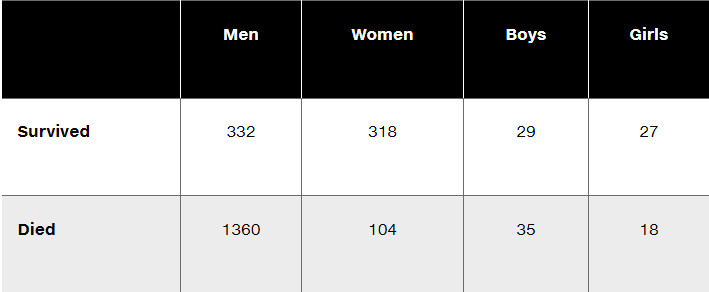Robust What does it mean when we say that the F test described in this section is not robust against departures from normality?
Table of contents
- 1. Intro to Stats and Collecting Data1h 14m
- 2. Describing Data with Tables and Graphs1h 55m
- 3. Describing Data Numerically2h 5m
- 4. Probability2h 16m
- 5. Binomial Distribution & Discrete Random Variables3h 6m
- 6. Normal Distribution and Continuous Random Variables2h 11m
- 7. Sampling Distributions & Confidence Intervals: Mean3h 23m
- Sampling Distribution of the Sample Mean and Central Limit Theorem19m
- Distribution of Sample Mean - Excel23m
- Introduction to Confidence Intervals15m
- Confidence Intervals for Population Mean1h 18m
- Determining the Minimum Sample Size Required12m
- Finding Probabilities and T Critical Values - Excel28m
- Confidence Intervals for Population Means - Excel25m
- 8. Sampling Distributions & Confidence Intervals: Proportion1h 25m
- 9. Hypothesis Testing for One Sample3h 57m
- 10. Hypothesis Testing for Two Samples4h 50m
- Two Proportions1h 13m
- Two Proportions Hypothesis Test - Excel28m
- Two Means - Unknown, Unequal Variance1h 3m
- Two Means - Unknown Variances Hypothesis Test - Excel12m
- Two Means - Unknown, Equal Variance15m
- Two Means - Unknown, Equal Variances Hypothesis Test - Excel9m
- Two Means - Known Variance12m
- Two Means - Sigma Known Hypothesis Test - Excel21m
- Two Means - Matched Pairs (Dependent Samples)42m
- Matched Pairs Hypothesis Test - Excel12m
- 11. Correlation1h 24m
- 12. Regression1h 50m
- 13. Chi-Square Tests & Goodness of Fit2h 21m
- 14. ANOVA1h 57m
9. Hypothesis Testing for One Sample
Steps in Hypothesis Testing
Problem 11.q.7
Textbook Question
Questions 6–10 refer to the sample data in the following table, which describes the fate of the passengers and crew aboard the Titanic when it sank on April 15, 1912. Assume that the data are a sample from a large population and we want to use a 0.05 significance level to test the claim that surviving is independent of whether the person is a man, woman, boy, or girl.

What distribution is used to test the stated claim (normal, t, F, chi-square, uniform)?
 Verified step by step guidance
Verified step by step guidance1
Step 1: Understand the problem. The goal is to test the claim that survival is independent of the category (man, woman, boy, girl). This involves analyzing categorical data, which is presented in a contingency table format.
Step 2: Identify the appropriate statistical test. Since the data involves categorical variables and we are testing for independence, the chi-square test for independence is the appropriate test. This test evaluates whether the observed frequencies in the contingency table differ significantly from the expected frequencies under the assumption of independence.
Step 3: Formulate the null and alternative hypotheses. The null hypothesis (H₀) states that survival is independent of the category (man, woman, boy, girl). The alternative hypothesis (H₁) states that survival is not independent of the category.
Step 4: Calculate the expected frequencies for each cell in the contingency table. Use the formula: E = (row total × column total) / grand total, where E represents the expected frequency for a cell.
Step 5: Compute the chi-square test statistic using the formula: χ² = Σ((O - E)² / E), where O represents the observed frequency and E represents the expected frequency for each cell. Compare the test statistic to the critical value from the chi-square distribution table at the 0.05 significance level to determine whether to reject the null hypothesis.
 Verified video answer for a similar problem:
Verified video answer for a similar problem:This video solution was recommended by our tutors as helpful for the problem above
Video duration:
4mPlay a video:
Was this helpful?
Key Concepts
Here are the essential concepts you must grasp in order to answer the question correctly.
Chi-Square Test
The Chi-Square test is a statistical method used to determine if there is a significant association between categorical variables. In this context, it helps assess whether survival rates are independent of gender and age categories (men, women, boys, girls) among Titanic passengers. The test compares observed frequencies in each category to expected frequencies, allowing researchers to evaluate the null hypothesis of independence.
Recommended video:
Guided course

Step 2: Calculate Test Statistic
Null Hypothesis
The null hypothesis is a statement that assumes no effect or no difference in a statistical test. In this scenario, the null hypothesis posits that survival is independent of the categories of gender and age. Testing this hypothesis allows researchers to determine if any observed differences in survival rates are statistically significant or simply due to random chance.
Recommended video:
Guided course

Step 1: Write Hypotheses
Significance Level
The significance level, often denoted as alpha (α), is the threshold for determining whether to reject the null hypothesis. A common significance level is 0.05, which indicates a 5% risk of concluding that a difference exists when there is none. In this case, using a 0.05 significance level means that if the p-value from the Chi-Square test is less than 0.05, the null hypothesis of independence would be rejected, suggesting a significant relationship between survival and the categories.
Recommended video:
Guided course

Step 4: State Conclusion Example 4

 5:12m
5:12mWatch next
Master Intro to Hypothesis Testing with a bite sized video explanation from Patrick
Start learningRelated Videos
Related Practice
Textbook Question
108
views
